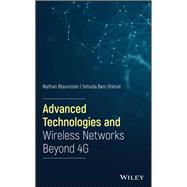A guide to the physical and mathematical-statistical approaches to personal and mobile wireless communication networks
Wireless Networks Technologies offers an authoritative account of several current and modern wireless networks and the corresponding novel technologies and techniques. The text explores the main aspects of the "physical layer" of the technology. The authors—noted experts on the topic—examine the well-known networks (from 2-G to 3-G) in a historical perspective. They also illuminate the "physical layer" of networks while presenting polarization diversity analysis and positioning of any subscriber located in areas of service both for land-to-land and land-to-atmosphere communication links.
The book includes clear descriptions of planning techniques for different integrated femto/pico/micro/macrocell deployments. The authors also examine new technologies of time and frequency dispersy and multiple-input and multiple-output (MIMO) modern network design in space and time domains. In addition, the text contains a discussion of a MIMO network based on multi-beam adaptive antennas. This important book:
- Provides an examination of current and modern wireless networks
- Describes various techniques of signal data capacity and spectral efficiency based on the universal stochastic approach
- Explains how usage of MIMO systems with adaptive multi-beam antennas increase the grade of service and quality of service of modern networks beyond 4-G
- Provides comparative analysis of depolarization effects and the corresponding path loss factor for rural, mixed residential, suburban, and urban land areas
Written for students and instructors as well as designers and engineers of wireless communications systems, Wireless Networks Technologies offers a combination of physical and mathematical-statistical approaches to predict operational parameters of land-to-land and land-to-atmosphere personal and mobile wireless communication networks.









